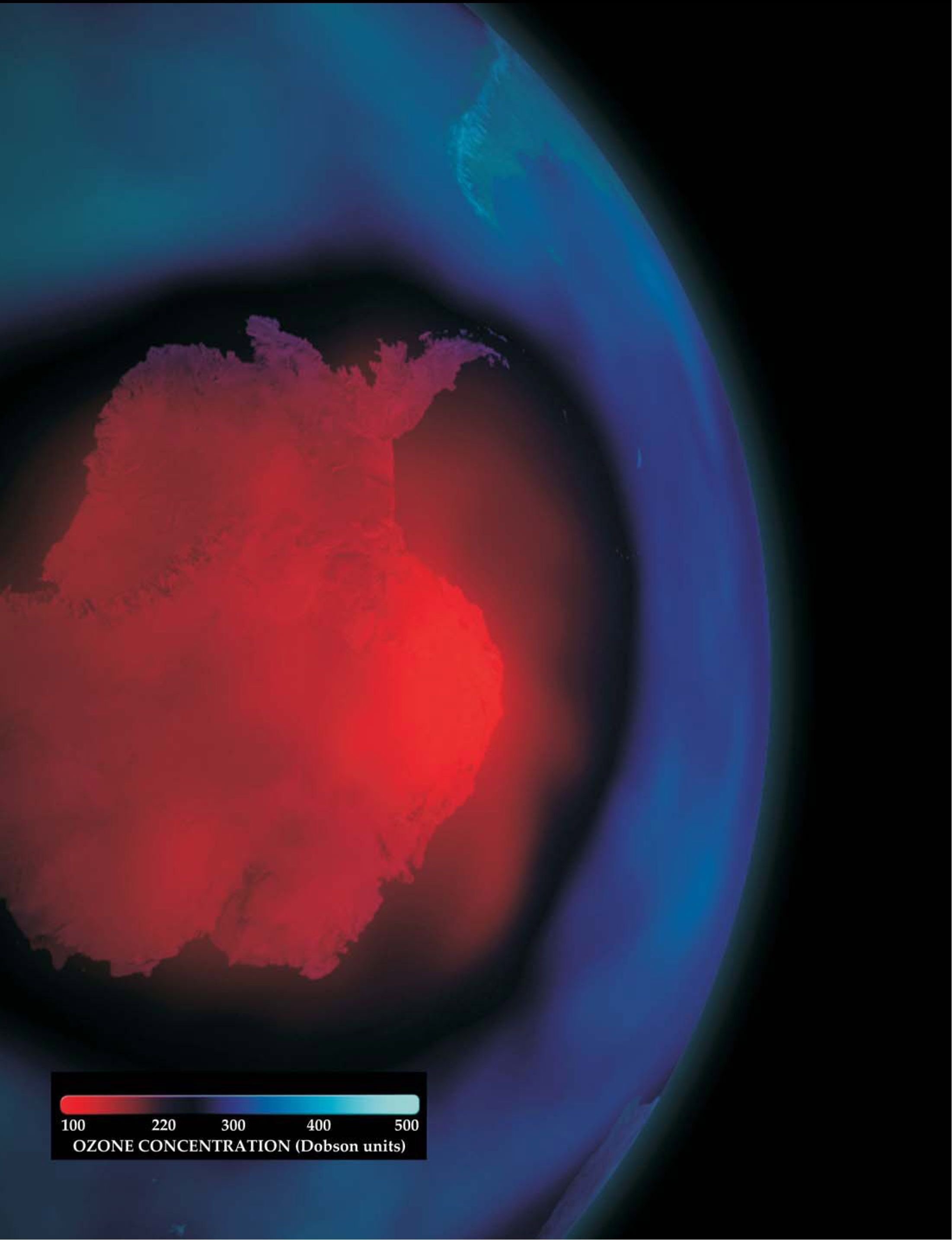The 2010 Antarctic ozone hole
DOI: 10.1063/1.3518221
Each August, as sunlight begins to pierce the winter-long Antarctic night, UV radiation splits apart diatomic chlorine molecules that have formed on stratospheric clouds above the South Pole, and the freed radicals catalyze the breakup of ozone. For the past two and a half decades, increased chlorine concentrations from anthropogenic chlorofluorocarbons and related chemicals have led to extensive ozone depletion—the “Antarctic ozone hole.’
The ozone hole reaches its greatest horizontal extent in late September or early October. This false-color image of ozone concentrations, based on UV and IR measurements by the National Oceanic and Atmospheric Administration, shows the ozone hole (in red) on 26 September 2010, at its maximal extent for the year. At roughly 20 million square kilometers, its area is larger than that of Russia.
Ozone concentrations are measured in Dobson units (DU). One DU of ozone would form a layer 10 µm thick at standard temperature and pressure. The average ozone concentration planetwide is approximately 300 DU. Prior to 1979, ozone measurements over Antarctica were always above 220 DU, so 220 has emerged as the threshold for defining the hole.
Many factors, including weather and atmospheric dynamics, influence the size of the ozone hole. Thanks to the Montreal Protocol and subsequent agreements, stratospheric chlorine concentrations have declined from their peak in the early 2000s, but they remain higher than in the late 1970s and early 1980s, and ozone depletion will continue for several decades more. The World Meteorological Organization and United Nations Environment Programme recently released the executive summary of their 2010 report on the world’s ozone layer; it is available at http://www.unep.ch/ozone
To submit candidate images for Back Scatter, visit http://www.physicstoday.org/backscatter.html

(Image courtesy of NOAA.)

